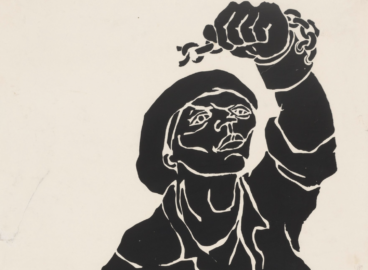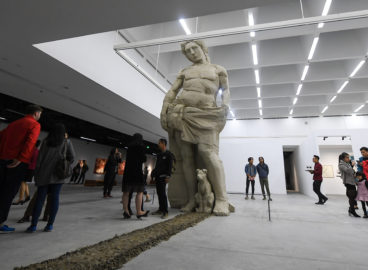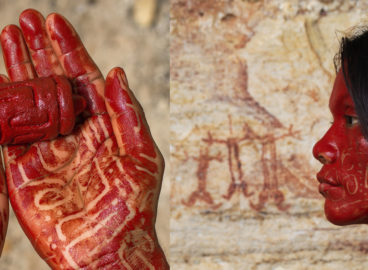With this text, Dr. Riánsares Lozano de la Pola (Researcher at the Instituto de Investigaciones Estéticas-UNAM, Mexico City) responds to the presentations and subsequent dialogue prompted by the 2021 C-MAP seminar series,Transversal Orientations. Creating possibilities for future discussion, Lozano de la Pola provides a reflection on Politics of Position, the fourth and final panel of the seminar series, held in June 2021 as a virtual gathering and exchange with Jeannine Tang, Jaanus Samma, and Irmgard Emmelhainz.
Este ensayo está disponible en español.
The slow erosion of the absolutes of History, as the histories of peoples who have been disarmed, dominated or sometimes are purely and simply disappearing but have nevertheless burst onto the scene of our common theatre, have finally met up and contributed to changing the whole representation that we had of History and its system.
Édouard Glissant1Édouard Glissant, Treatise on the Whole-World, trans. Celia Britton (Liverpool: Liverpool University Press, 2020), 7. Emphasis original.
1—Politics of position: Thinking situationally
Thinking situationally. From telluric movements. Weaving another national history. Questioning modern logic. Thinking situationally. Producing diasporic practices. Queering history. Generating new realities for grief. Surviving the necropolitical order.
To think situationally is to think from a specific place, from concrete—though not necessarily stable—bodies traversed by their marks, shaped through their experiences. To think situationally, says Ileana Diéguez, is to recognize the condition of experience in the production of any practice.2Ileana Diéguez, “Interpelando al ‘caballo académico’: por una práctica afectiva y emplazada,” Nómadas 50 (2019): 113.
Thinking situationally implies speaking about position, and every position also entails a place with respect to the rest, a place in relation to others. Occupying a position is an issue as spatial as it is political.
Jeannine Tang, Jaanus Samma, and Irmgard Emmelhainz were the three guest speakers who participated in “Politics of Position,” the last session of the seminar Transversal Orientations, held in June 2021 by the Contemporary and Modern Art Perspectives (C-MAP) program. The proposal emerged from the presentation of transversalism as a kind of “third space,” a concept that as an expansive tool seeks to extend across the limits of what is visible, what can be said, what is already known. In this last panel, the guest speakers presented different artistic practices produced in their local or regional contexts (Southeast Asia, the Baltic region of Europe, and Latin America, respectively). Thus, accompanied by the works of Irwan Ahmett and Tita Salina, the productions of Jaanus Samma himself, and some works by Teresa Margolles, Doris Salcedo, and Santiago Sierra, the three guests answered questions posed by Inés Katzenstein3Inés Katzenstein is director of the Patricia Phelps de Cisneros Research Institute for the Study of Art from Latin America and curator of Latin American Art at MoMA. as the opening of the panel: How do we question the self-appointed and performed centrality of the North? How do we accommodate different traditions, different ways of narrating art histories? How do we create an expanded discipline?
What follows is a partial description of, or way of accounting for, the dialogue generated by these three contributions. For this purpose, we will focus on two key moments: traces and conversations.
2—Traces: Can a trace only be a trace?
The trace is an opaque way of experiencing the branch and the wind: of being oneself, derived from the other […] It is the violent wandering of the shared thought.
Édouard Glissant4Glissant, Treatise on the Whole-World, 10. Emphasis original.
Can a trace only be a trace in local contexts? With this question, Madeline Murphy Turner5Madeline Murphy Turner is the Cisneros Institute/C-MAP Latin America Research Fellow at MoMA. opened the dialogue that followed individual presentations by Tang, Samma, and Emmelhainz.
The question, based on this image that is also a metaphor, contained—condensed—some of the aspects discussed in the three interventions: long-term projects; the unstable; the in-between; the political reading of the trace; the politics of location; the false center/periphery dichotomy established by that absolute History that, in the best of cases, allows itself to be accompanied by those other histories presented as radical in their peripheral contextuality. Can a history not always be (radically) local? Are there non-situated contexts? Are there nonpolitical positions? Can a trace only be a trace?
The trace is, according to Martinique author Édouard Glissant, that vestige that places us all—regardless of origin—in the field of Relation.6The category of Relation, central to Édouard Glissant’s thought, is a capital tool for reading the contemporary world from the Caribbean. By presenting the world as Relation, as a wandering rhizomatic structure that also relies on the mechanics of the trace, on the thought of the vestige, Glissant proposes a reading of the cohabited world in the face of the deceptive idea of the One. See Édouard Glissant, Poétique de la Relation: Poetique III (Paris: Gallimard, 1990). But for some, for those who occupy “the hidden face of the earth,” the trace is also the place of survival: “The trace goes into the land, which will never again be a territory”:7Glissant, Treaty of the Whole-World, 10. the trace is detached from belonging.
In this world of death that defines the social, political, and economic contexts of our own lives—especially the lives of those who inhabit the global South, also traversed by the marks of racialization, of poverty, by the marks of gender and sexuality—in these contexts, which are both situated and connected, artistic practices—certain artistic practices—have, as we saw in the presentations, a double function.
On the one hand, they help us to detach. To detach ourselves from original national identities and challenge, among other things, punitive immigration laws. Like in Name Laundering, the performance in which Irwan Ahmett recites eight ways to cross the borders of Singapore without having to answer to immigration authorities. They help us detach from the spectacle of violent images at the service of necropolitical power: like in Fragmentos, the counter-monument with which Doris Salcedo melts down the materiality of the Colombian armed conflict out of the weapons surrendered by the FARC. To detach ourselves from national histories, their heroes, their archives, and their penal codes, and then—from the present—render homosexual lives in Soviet Estonia visible: like in the exhibition Not Suitable for Work: A Chairman’s Tale, by Jaanus Samma.
On the other hand, this type of work that communicates the fields of art with that of political struggle also has the ability to make appear.
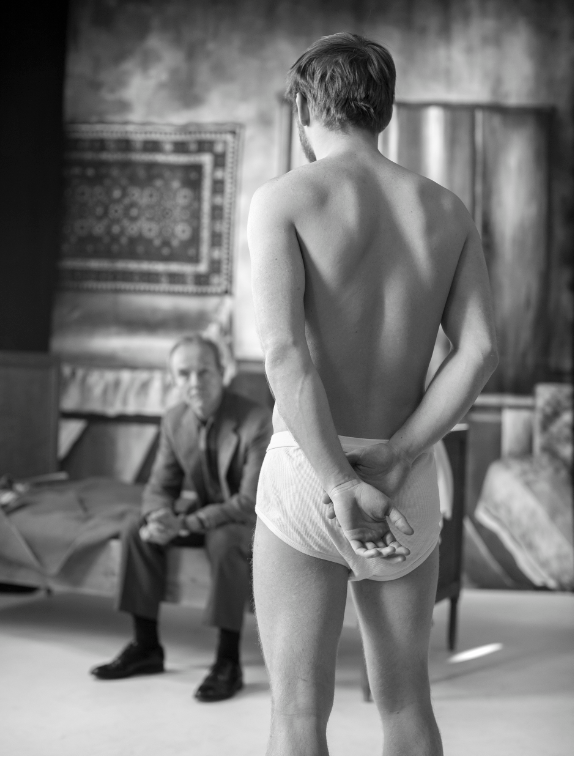
In one of the best-known chapters of The Human Condition, Hannah Arendt relates the “spaces of appearance” (founded on an active and discursive grouping) with the possibilities and potencies of “power.” Faced with the negative connotation that this term acquired in critical studies of the second half of the twentieth century, “power” for Arendt is a tool of action opposed to that other element that she calls “force.” The only limitation for power to happen, for the “appearance” to take place, is the existence of other people, in their equality and their difference; plurality, like the trace, is the starting point.8Hannah Arendt, La condición humana (Barcelona: Paidós, 2005). In this area, one’s own pain can be transformed into a collective and powerful experience crossed by multiple temporalities, situated in different spaces: the encounter between colonial history, political struggles, and the ecological crisis in Indonesia; the cracks of Modernity as an incomplete project in Mexico; or the history of sexuality in the Soviet Union.
We also know that footprints, traces, are in themselves a possibility of presence and, with it, the opening of conversation. In her penultimate novel Autobiografía del algodón, Mexican writer Cristina Rivera Garza retraces the steps of Mexican novelist and political activist José Revueltas in order to, along with him, explain that the footprints of others are always inhabited footprints,9Rivera Garza explains that Las huellas habitadas (Inhabited Footprints) is the title José Revueltas gave his 1942 manuscript (still in its first draft), which would later become the novel El luto humano (The Stone Knife, a novel), published in 1943. and that artistic practices (writing, in this case) allow us to return to them; these practices render them visible once more, make them appear in all their materiality: “They allow us to step on them. Go through them.” Revueltas footprints10In the Spanish language, apart from being the surname of the celebrated Mexican writer, the word “Revueltas” also means “mixed.” The author is playing with both meanings. “open the possibility of inhabiting and, more importantly, of cohabiting.”11Cristina Rivera Garza, Autobiografía del algodón (Mexico City: Random House, 2020), 92.
Revueltas’s footprints remind us, as do Glissant and Rivera Garza, that every vestige is always the welcoming trace that points to our steps, our wandering position in this conversation. It is not surprising then that, in Spanish, “room” and “conversation” are semantically linked words;12According to the Dictionary of the Royal Spanish Academy, the word “conversación” (conversation), in a fourth meaning now in disuse in this language, is also synonymous with “habitación” or “morada” (room or abode). although that knot, that link, is lost today due to disuse.
3—Conversations: to unfold experiences
The alternative to relativism is partial, locatable critical knowledges sustaining the possibility of webs of connections called solidarity in politics and shared conversations in epistemology.
Donna haraway13Donna Haraway, “Situated Knowledges: The Science Question in Feminism and the Privilege of Partial Perspective,” Feminist Studies 14, no. 3 (Autumn 1988): 584.
For a conversation to happen, we need, at least, to have a space of interest, of “inter-est” as Hannah Arendt would say.14Hannah Arendt, La condición humana (Barcelona: Paidós, 2005), 211. Faced with the unambiguous meaning of the absolute narrative (monolingual, monochromatic), the conversation involves the crossing of—at least—two differentiated voices, a dialogue that, ad infinitum, can be complicated with accents, tones, timbres, and colors.
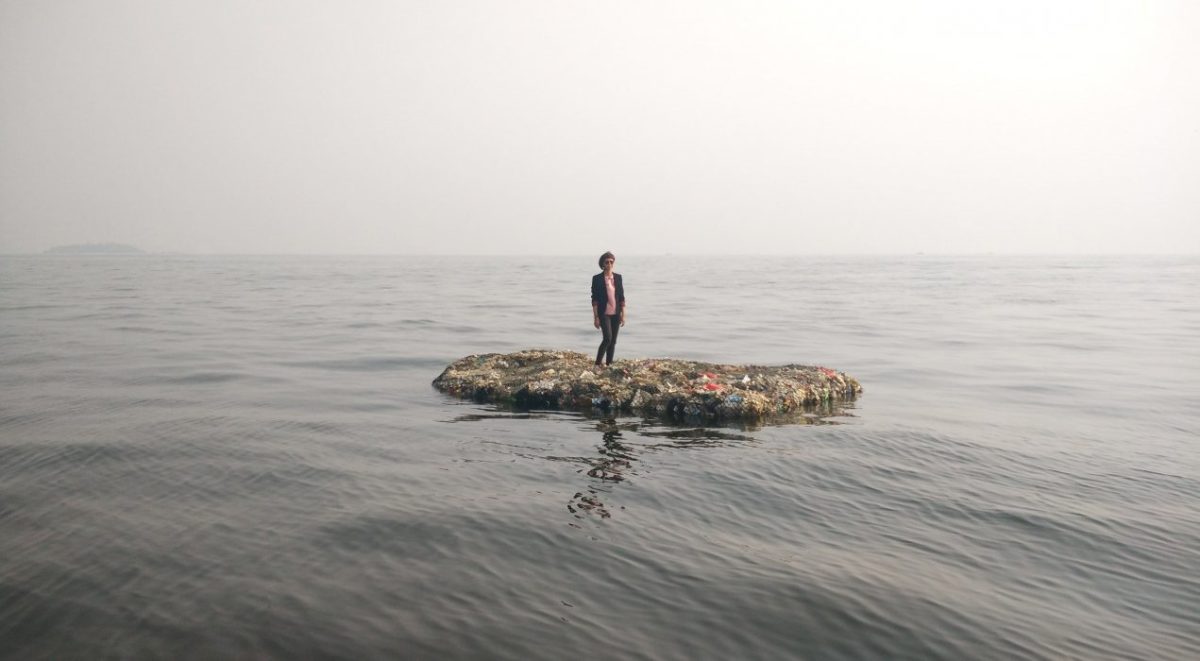
If, in addition, the conversation spans more than a decade, like the project The Ring of Fire,15The Ring of Fire is an ongoing project started by Irwan Ahmett and Tita Salina in 2014. and has slowness as its premise, as a research method, it becomes an authentic revolution: a tool that dispels the voracious rush of capital and its extractionist forces. Allowing for conversation to emerge from this practice in which Salina and Ahmett strategically place themselves between art and activism is, according to Jeannine Tang, a gesture of respect, a sign of the will for collaboration (between artists and the rest of local actors) that results in the production of extremely unspectacular materials: common stories, and unfolded experiences. Placing the conversation at the center, departing from the conversation to return to it, over and over, using it as a research method, appears to be a common tool in the artistic practices that were shared during the three interventions—an element perhaps characteristic of politics of location.
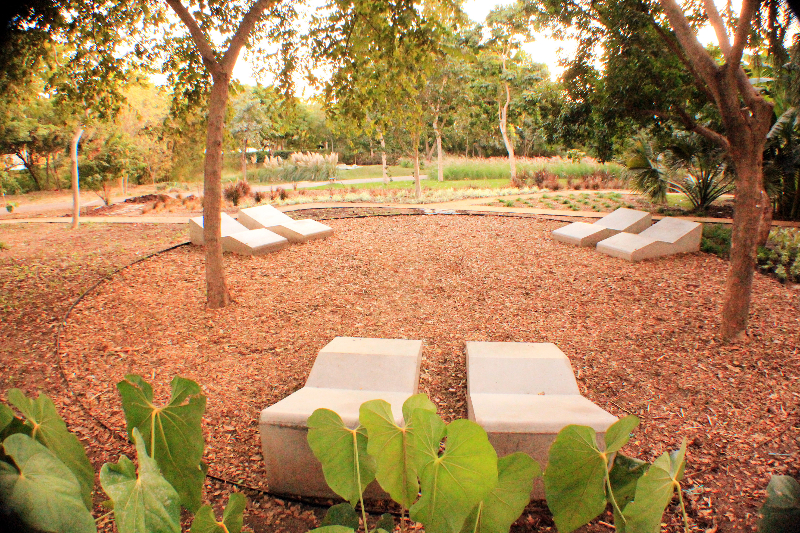
In Mexico, more than a decade ago, Teresa Margolles built benches using white cement that set thanks to its mixture with water, which had been distilled after washing the bodies of murdered people. The benches, which contain the horror shared by the inhabitants of Culiacán, Ciudad Juárez, and many other places besieged by violence in Mexico and the world, invited visitors of various public spaces to take a seat and, thereby, generate a suitable space for dialogue. A dialogue with life (or from it) founded, once again, on the weight of the trace of the people who are no longer here. A talk that opens, as argued by Irmgard Emmelhainz, new realities for mourning.
The conversation is also found in the embroidery with which Jaanus Samma, in collaboration with other textile artists, intervenes in men’s underwear through the rewriting of traditional decorative patterns. The collective revision of tradition is, in this way, put at the service of queer fabulation in their series Pattern: a crooked gesture crafted by several hands; a (queer) history that could have existed.
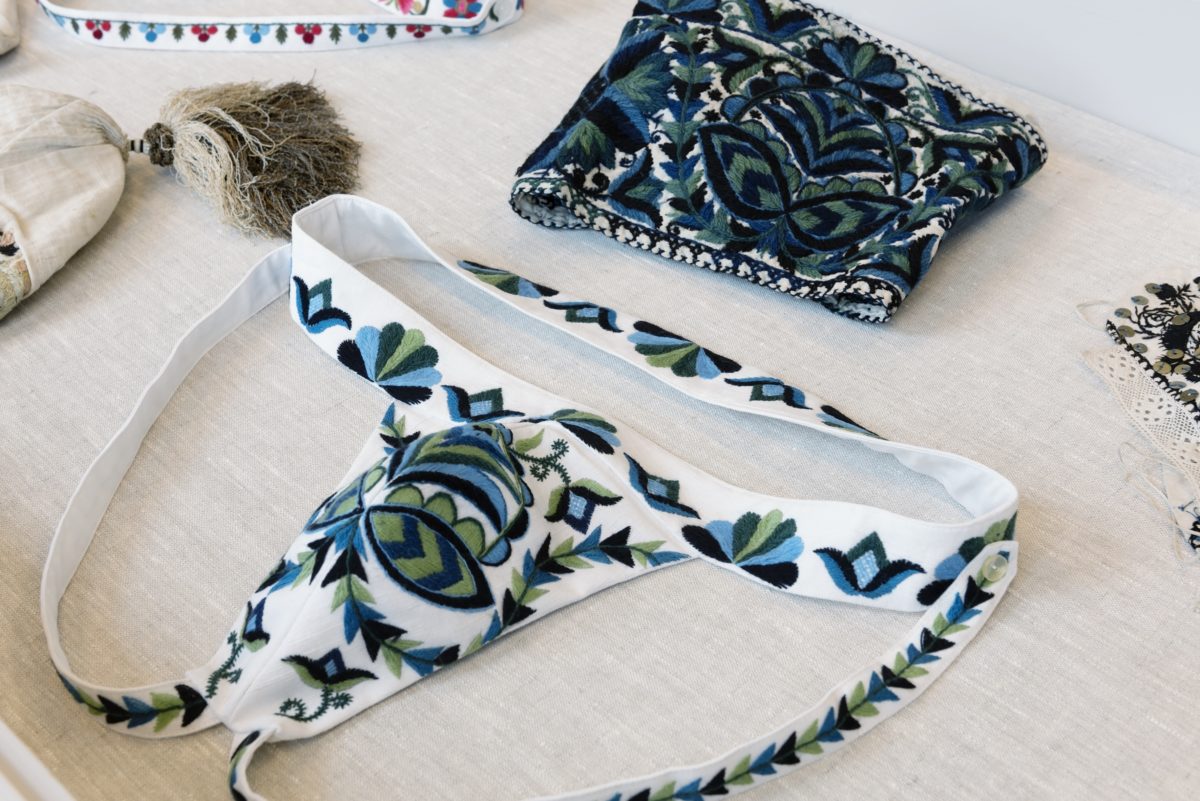
Transversal Endings
Recognizing the plural root of our habitation, assuming our condition of guests in a radically shared world implies, above all, being aware, living in a constant state of alert about the links that extend from human being to human being, and the ties that go from human being to animal being, to the planet being, to the stone being.
Cristina rivera garza16Autobiografía del algodón, 89.
Thinking in a situated way is to also think from the soles of our feet. From the walk of so many bodies that, throughout history, have been displaced by the effects of colonialism, climate change, capitalist terror, patriarchal and heterosexist violence; from the walk of so many bodies in search of their disappeared loved ones, in search of justice, in search of peace. Changing our perspective, modifying our gaze, directing it to our feet, moving it away from art history, casting it beyond museums, orienting it transversely is, also, questioning ourselves and disturbing our ways of doing, our methods.
The interventions by Tang, Samma, and Emmelhainz—located in geographically distant contexts, but joined by the scars of colonial pasts; by stories of racialized, gendered, and sexualized bodies; by experiences of environmental devastation and land dispossession—show us that thinking about politics of location from the current artistic practice is a radical exercise; that is, it recognizes the plural strain of our territory, which unearths—remembers—the expanded roots of so many overflowed somatic experiences. A situated and connected exercise based, following the footprints of Chela Sandoval, in the formation of differential positioning networks.17Chela Sandoval, “Nuevas ciencias. Feminismo cyborg y metodología de los oprimidos,” in Otras inapropiables. Feminismos desde las fronteras, by bell hooks et al. (Madrid: Traficantes de sueños, 2004). An exercise in which artistic practices—certain artistic practices—can function as tools to value things in life, as practices that question the limits of survival, as slow conversations, which erode the absolute narrative, while rendering visible the plots (networks) of this world-Relation that we cohabit.
- 1Édouard Glissant, Treatise on the Whole-World, trans. Celia Britton (Liverpool: Liverpool University Press, 2020), 7. Emphasis original.
- 2Ileana Diéguez, “Interpelando al ‘caballo académico’: por una práctica afectiva y emplazada,” Nómadas 50 (2019): 113.
- 3Inés Katzenstein is director of the Patricia Phelps de Cisneros Research Institute for the Study of Art from Latin America and curator of Latin American Art at MoMA.
- 4Glissant, Treatise on the Whole-World, 10. Emphasis original.
- 5Madeline Murphy Turner is the Cisneros Institute/C-MAP Latin America Research Fellow at MoMA.
- 6The category of Relation, central to Édouard Glissant’s thought, is a capital tool for reading the contemporary world from the Caribbean. By presenting the world as Relation, as a wandering rhizomatic structure that also relies on the mechanics of the trace, on the thought of the vestige, Glissant proposes a reading of the cohabited world in the face of the deceptive idea of the One. See Édouard Glissant, Poétique de la Relation: Poetique III (Paris: Gallimard, 1990).
- 7Glissant, Treaty of the Whole-World, 10.
- 8Hannah Arendt, La condición humana (Barcelona: Paidós, 2005).
- 9Rivera Garza explains that Las huellas habitadas (Inhabited Footprints) is the title José Revueltas gave his 1942 manuscript (still in its first draft), which would later become the novel El luto humano (The Stone Knife, a novel), published in 1943.
- 10In the Spanish language, apart from being the surname of the celebrated Mexican writer, the word “Revueltas” also means “mixed.” The author is playing with both meanings.
- 11Cristina Rivera Garza, Autobiografía del algodón (Mexico City: Random House, 2020), 92.
- 12According to the Dictionary of the Royal Spanish Academy, the word “conversación” (conversation), in a fourth meaning now in disuse in this language, is also synonymous with “habitación” or “morada” (room or abode).
- 13Donna Haraway, “Situated Knowledges: The Science Question in Feminism and the Privilege of Partial Perspective,” Feminist Studies 14, no. 3 (Autumn 1988): 584.
- 14Hannah Arendt, La condición humana (Barcelona: Paidós, 2005), 211.
- 15The Ring of Fire is an ongoing project started by Irwan Ahmett and Tita Salina in 2014.
- 16Autobiografía del algodón, 89.
- 17Chela Sandoval, “Nuevas ciencias. Feminismo cyborg y metodología de los oprimidos,” in Otras inapropiables. Feminismos desde las fronteras, by bell hooks et al. (Madrid: Traficantes de sueños, 2004).
